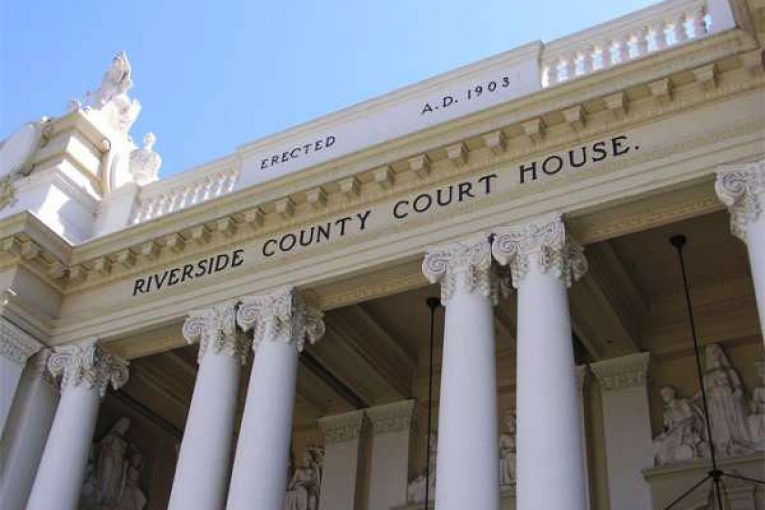
 By Natalia Ruvalcaba
By Natalia Ruvalcaba
RIVERSIDE, CA – A retired police officer and an investigator testified here in Riverside County Superior Court this week in the re-trial of Paul Nathan Henderson, a man convicted and sentenced to death for a 1997 murder.
Henderson is being retried on the charges after his case was successfully appealed by the Supreme Court of California after police violated his Miranda/Fifth Amendment rights.
The court said, in a July 2020 ruling in Henderson’s favor, “(S)uspects may give halting or reluctant answers. They may give responses that the questioners suspect are false. Officers are permitted to encourage a subject to talk and to challenge statements as untrue. What they cannot do is brush aside a clear invocation.”
And that, apparently, is what happened when Henderson stopped talking with officers and asked for an attorney after he allegedly waived his Miranda rights, according to CA Supreme Court.
Earlier, Henderson told officers he had been in Cathedral City, where Reginald Baker was killed and his wife, Peggy Baker, was left for dead after someone broke into their mobile home, tied them up and ransacked the home. A resident of a homeless shelter said Henderson admitted the crime to him.
According to court documents, Henderson “did not finish the sentence (after asking for an attorney) because one of the officers interrupted him and asked if he was accepting responsibility for what happened to the Bakers. The interview continued, and Henderson eventually confessed. When his motion to suppress
his confession was denied, the case went to trial and he was found guilty. He was sentenced to death.”
In the new trial this week, retired Commander Herrera testified that on June 22, 1997 he was dispatched after a report of an assault with a deadly weapon to a residence in Riverside County. According to the commander, when he arrived on scene, he noticed that the residence was situated in a mobile home park.
Herrera said it was readily apparent that inside of the mobile home he noticed “a state of disarray,” detailing that the residence had been ransacked, “open drawers, I noticed some clothing and other items on the floor in various rooms and I also noticed that there was blood inside the location.”
Commander Herrera testified that Reginald Baker, the deceased victim, was still at the location, but that the victim’s wife was already transported to the hospital. After that point, Commander Herrera stated that he looked for items of potential evidence, including witnesses or suspects.
When looking around the premises, Herrera said that he observed some “shoe impressions in some vacant lots, the same shoe impression.”
Deputy District Attorney Samantha Paixao asked the commander about his whereabouts on the day of July 5, 1997, and the officer testified that he went to Los Angeles to the Weingarten Center, a shelter for the unhoused and those experiencing poverty, in search of Paul Nathan Henderson.
After a while, Commander Herrera informed the court that he was able to make contact with Henderson, whom he then identified in court today. Herrera said Henderson, when arrested, had a pair of shoes that resembled the bottom of the shoes found at the crime scene.
Private Defense Attorney John Aquilina then cross-examined the witness, inquiring about the residence and the shoe to which Commander Herrera connected back to the defendant. Commander Herrera responded that the residence was a single story residential mobile home and that the shoe was a size 8.5.
DDA Paixao called police Investigator Sean Dusek, who detailed the findings of the lead forensic pathologist on Henderson’s case, recalling that the doctor said a serrated knife was consistent and capable of causing that wound.
However, it was made of significance by Dusek that the wound alone was not life-threatening in and of itself.
During the examination of victim Baker, the pathologist, said Dusek, discovered that the victim had a severe heart disease and had undergone coronary bypass surgery. The investigator stated that the victim “had an enlarged heart and several enlarged arteries and his health was seriously compromised.”
Investigator Dusek said the pathologist found the injury appeared to be perimortem or postmortem, as well as being “consistent with someone who is on blood thinners,” and that the center of the victim’s wrist was dark purple, consistent with someone who was bound.
During the cross-examination by defense Attorney Aquilina, investigator Dusek admitted he had been provided a list of questions before talking to the pathologist.
Counsel Aquilina questioned the witness, “Other than the wounds of the neck, were there other stab wounds?” Investigator Dusek responded, “I didn’t ask about any other stab wounds.”
Dusek testified that the incised wound was a contributing factor to victim Baker’s death, noting, as he understood it, the wound caused the stress that caused the victim’s heart to stop and for him to die.
DDA Paixao then asked “Based upon your conversation with (the pathologist) in its entirety, is it fair to say that he was saying that the stressful situation that Mr. Baker was under on June 22, 1997, essentially exacerbated his heart condition which caused the sudden stoppage of his heart?”
Dusek simply answered, “Yes.”
PVT Aquilina reopened for one question about whether or not Dusek asked Dr. Garber about when the victim lost consciousness, which was met by a negative response by the witness.
The preliminary hearing was to reconvene this week.

